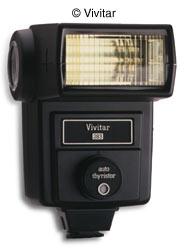Holiday shopping options have been a big subject in the news recently. In these economic times, people will be spending less we’re told. The research and forecasting people predict that consumers at all income levels will buy different kinds of things, and the trend will be toward more practical gifts.
Now that heating oil has dropped, one can only buy so many sweaters and socks for family and friends. For a practical, reasonably priced gift — particularly since you’re adept at photography - we suggest you consider a digital photo frame, preferably a frame loaded with your beautiful pictures that will be sure to please a family member, friend, or loved one.
The time is right for digital photo frames — they’ve been big sellers for the past two Holiday seasons, but consumer research shows that most households don’t have one yet. And, unlike a giant plasma television or a pool table, even if someone has a digital frame, there’s room for more than one frame in a household. There’s no reason not to be able to display pictures of family, special moments, and wonderful vacation memories in the living room as well as your den, study, family room or bedroom. Come to think of it, those photos from last year’s trip to the Napa Valley wine country might look pretty good in the kitchen as well.
Anyone can buy a digital photo frame, but since you’re interested in photography, you’re in an ideal position to fill that frame with lovely photos that you have taken. What could be better! You could load up a bunch of your favorite family portraits for grandmother, or assemble a set of vacation photos for your favorite travel mate. The possibilities are endless. You could even preload the photos from this year’s birthday and Thanksgiving celebrations and then add Christmas pictures that you’re taking as your present is being unwrapped.
Digital Photo Frame Shopping Tips
This fall, we’ve been testing a number of different digital frames, and we’ve developed a set of tips you should keep in mind. Brands and models and prices change so frequently that we think you’re better off following a set of guidelines rather than chase a specific model. There’s probably a new model number from the one we tested.
-
Bigger is better, within reason. Chances are that the person to whom you’ll give a digital frame will display it on a desk, tabletop or bookshelf. While some frames can run on batteries, most frames need to be near a power supply. There are some nice models with an overall frame size of about 12"x14". This is a size that will fit most anywhere and still provide a nice easy-to-see image.
While we’re talking about size, let’s clear up one point: screensize. Just like televisions and monitors, digital photo frames are generally sold by the diagonal measurement of the screen, hence, a 10-inch (diagonal) screen has a display area that’s roughly 5-½" high and 9" wide. But, think of that as the area inside the frame. Generally there’s a surrounding area of matte board (just like an old-school frame!) and then the frame itself, so the 10" screen resides in a package that has overall measurements of 14" wide and 12" high. This means that a 10" screen will occupy a footprint on a desk or table of about 14".
-
Make sure the frame you purchase accommodates the type of memory card you use in your camera. As you would expect, different frames accept different types of memory cards. Since there will be times when you’ll want to be able to load pictures directly from you camera’s memory card to the frame, you'll want to first make sure that’s possible. A frame that can handle all kinds of memory cards is more versatile than one that only accepts a few types. Sure, you may be using a camera that takes an SD card right now, but what if you find a new camera under the Christmas tree that takes Sony’s Memory Stick? Or, what if you upgrade to a professional-level DSLR that uses Compact Flash? There are lots of frames out there that can accommodate many different cards.
-
There will be other times when you’ll download a large number of pictures into your computer and then select the best photos to display on your frame. Look for a frame that has a USB port, so you can create a folder of selects on your computer and then copy the folder to a portable thumb drive for transfer to the frame.
-
Digital frames that offer wireless transfer can be very handy and get you around the issues related to the type of flash card. Most of these rely on Bluetooth technology and you may need to purchase a separate adaptor. Generally these frames are more expensive, so if you’re not a Bluetooth kind of person, you may not want to pay for the convenience of wireless. Loading the old-fashioned way isn’t that hard anyway. But, if wireless is your “everything,” go for it.
-
Digital frames are very smart, but they can’t flip on their sides to display a vertical photograph. Chances are you’ll want to display mostly horizontal (landscape mode in computer talk) images as opposed to vertical (portrait mode) pictures. Vertical images are shown with black bars on the side, similar to watching a standard definition program on a newer wide-screen television.
-
Almost all digital frames have internal memory, so you can load pictures into your frame and then retrieve your flash memory card or USB drive for other uses. However, memory size is limited. The one 10-inch frame that we tested, for example, has 128 Megabytes of internal flash memory. That will be fine if you downsize your photos before you load them into memory. However, if you just dump 10-Megapixel jpegs into the frame’s internal memory you’re going to fill it up very fast. Since the display on this frame is 800x480 pixels, you need to reduce the capture file down to roughly the size that you would use to display photographs on a Web site.
We looked at another model with a 15-inch diagonal screen that offered this handy advice: Displays up to 12-Megapixel images at 1024 x 768 resolution.” If you do the math, 1024x768 equals a mere 786,000 pixels, so if you load this model’s 256MB of memory with 12-megapixel behemoth files, you’re going to fill it up fast and about 11-million of those pixels will be superfluous — they won’t make the picture look any better. This frame will do just as well displaying 3- and 6-Megapixel images at 1024 x 768 resolution.”, which you can load many more of into memory.
-
Lighting matters and location counts. Pictures shown on digital frames look most amazing when they’re out of direct sunlight. The dimmer or darker the room, the more luminous your photos will look. Since you’re not going to sit around all day long with the lights off, help the recipient of your gift locate the frame in a position away from windows, and if possible, in a darker corner near an electrical outlet (see #1).
-
Buy the features that you want, don’t pay for ones that you won’t use. Some manufacturers have gotten very clever with added features. One model we looked at has a clock, an alarm, a calendar, and plays MP3 files and will even let you view .txt files so it’s kind of an e-book. It also allows you to play movies that are AVI files. Naturally it also permits slide show effects, but it won’t tell you your horoscope.
-
How will your photos be displayed? Ah, for the simple days of 35mm film when all images were in a 2x3 ratio. Now we have wider and squarer formats. If you use, for example, a camera that has the Four-Thirds format used by Olympus and Panasonic, how will it display on a screen that has a wider format? Chances are that the frame will either show dark areas on the right and left sides, or (far less preferable) s-t-r-e-t-c-h your image to cover the frame. This can make faces and figures look, shall we say, fuller than they are.
Those are the nine tips we think you should consider. We’re happy to report that we found the frames we tested worked well, were easy to load, and overall provide a nice high-tech treat to the eyes, with user-friendly set up and changing. As long as you don’t stuff too many pixels into each image file you display, you’ll be just fine.
There’s one important thing to remember when you load your beautiful photographs: stick to the ones you really like. As they play through and repeat, the strongest photos always look the best. You can also play with your images and convert them to black-and-white or sepia before you load them into the frame. Add a little of your favorite music if you frame can handle it, and — Enjoy! When you’re done shopping, visit www.nyip.edu for more holiday and winter photo tips.






